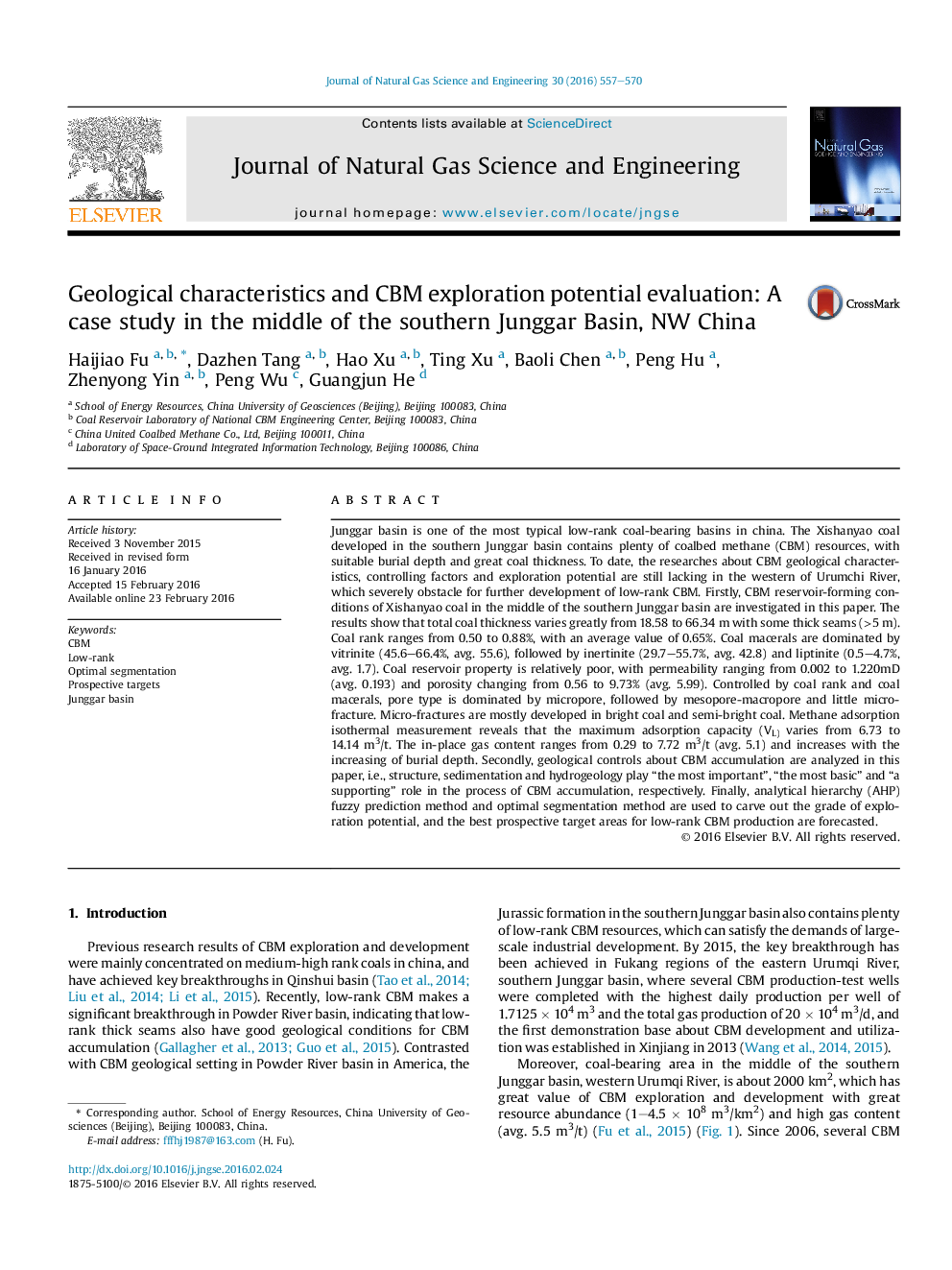| Article ID | Journal | Published Year | Pages | File Type |
|---|---|---|---|---|
| 1757196 | Journal of Natural Gas Science and Engineering | 2016 | 14 Pages |
•Optimal segmentation method was first used to confirm CBM exploration grades.•Geological characteristics of coal reservoirs were analyzed systematically.•Geological controls on CBM accumulation of the southern Junggar basin were analyzed.•4 prospective targets for CBM exploration was selected in this paper.
Junggar basin is one of the most typical low-rank coal-bearing basins in china. The Xishanyao coal developed in the southern Junggar basin contains plenty of coalbed methane (CBM) resources, with suitable burial depth and great coal thickness. To date, the researches about CBM geological characteristics, controlling factors and exploration potential are still lacking in the western of Urumchi River, which severely obstacle for further development of low-rank CBM. Firstly, CBM reservoir-forming conditions of Xishanyao coal in the middle of the southern Junggar basin are investigated in this paper. The results show that total coal thickness varies greatly from 18.58 to 66.34 m with some thick seams (>5 m). Coal rank ranges from 0.50 to 0.88%, with an average value of 0.65%. Coal macerals are dominated by vitrinite (45.6–66.4%, avg. 55.6), followed by inertinite (29.7–55.7%, avg. 42.8) and liptinite (0.5–4.7%, avg. 1.7). Coal reservoir property is relatively poor, with permeability ranging from 0.002 to 1.220mD (avg. 0.193) and porosity changing from 0.56 to 9.73% (avg. 5.99). Controlled by coal rank and coal macerals, pore type is dominated by micropore, followed by mesopore-macropore and little microfracture. Micro-fractures are mostly developed in bright coal and semi-bright coal. Methane adsorption isothermal measurement reveals that the maximum adsorption capacity (VL) varies from 6.73 to 14.14 m3/t. The in-place gas content ranges from 0.29 to 7.72 m3/t (avg. 5.1) and increases with the increasing of burial depth. Secondly, geological controls about CBM accumulation are analyzed in this paper, i.e., structure, sedimentation and hydrogeology play “the most important”, “the most basic” and “a supporting” role in the process of CBM accumulation, respectively. Finally, analytical hierarchy (AHP) fuzzy prediction method and optimal segmentation method are used to carve out the grade of exploration potential, and the best prospective target areas for low-rank CBM production are forecasted.
